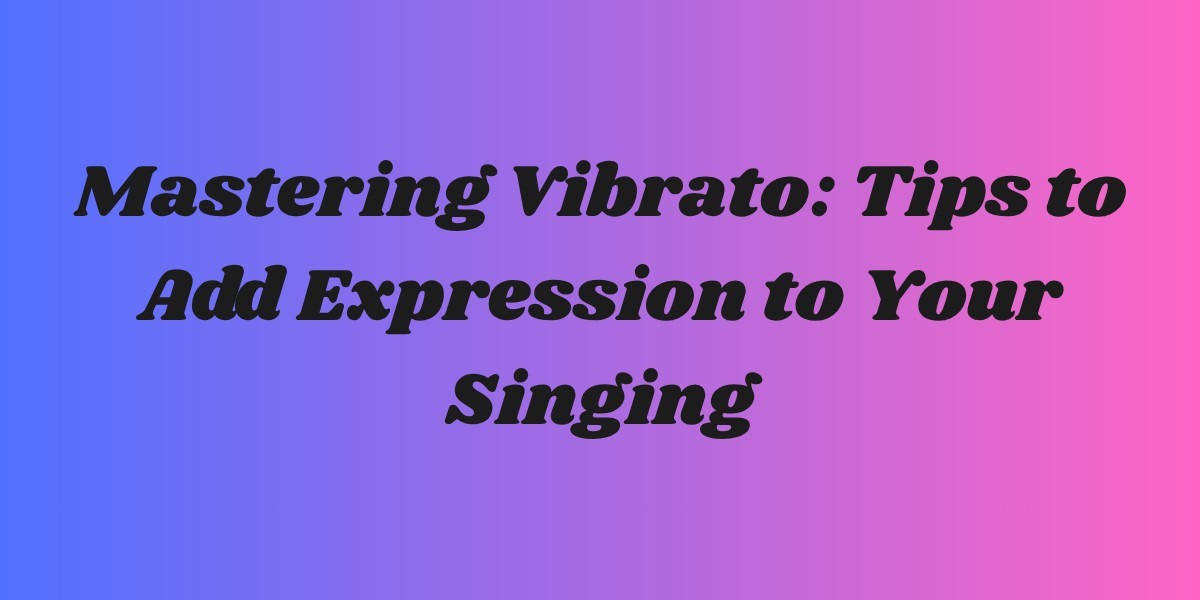Vibrato is the heartbeat of a singer’s tone, the gentle wave that gives emotion, richness, and life to every note. When a singer masters vibrato, their voice goes from sounding plain to powerful and expressive. It’s one of the most defining characteristics of great vocalists, from opera singers to pop stars. But mastering vibrato doesn’t happen overnight. It requires understanding, technique, and consistent practice to make it sound smooth and natural.
What Makes Vibrato So Important?
Vibrato is more than a stylistic choice it’s a reflection of healthy vocal production. When your voice is balanced, your breath steady, and your muscles relaxed, vibrato occurs naturally. It adds warmth and texture to your tone, helping each note blend beautifully with the next.
A controlled vibrato also helps your singing sound more confident and professional. Without it, your tone may seem flat or lifeless. Learning to control and shape vibrato is the difference between simply singing notes and truly expressing emotion through music.
Building the Foundation for Vibrato
Before you can master vibrato, you must strengthen your basic singing skills. Vibrato grows out of good posture, breath control, and relaxation. Stand tall, keep your shoulders open, and breathe deeply using your diaphragm. This creates the airflow needed to support a natural, free-moving voice.
Start by singing a single note and focusing on a steady, even tone. When your voice feels balanced and relaxed, small fluctuations in pitch will begin to occur naturally. Don’t try to force vibrato it should emerge on its own as your voice gains coordination and freedom.
Step-by-Step Exercises to Develop Vibrato
1. The Breathing Control Drill
Take a deep breath, filling your lungs completely. As you exhale, sing a long, even note on a vowel such as “ah.” Concentrate on keeping your airflow steady and smooth. Breath control is the foundation of a stable vibrato.
2. The Pitch Flexibility Exercise
Start on a comfortable note and slightly shift the pitch up and down in small, controlled movements. Keep your larynx relaxed while allowing your airflow to stay constant. This helps your vocal muscles coordinate naturally.
3. The Relax and Release Method
Tension in your jaw or throat prevents vibrato from sounding natural. Try gentle humming, lip trills, or light sighs before singing to release tightness. When your voice is relaxed, vibrato will sound smoother and more even.
How to Add Expression Through Vibrato
Vibrato should never be random—it’s a tool for emotional storytelling. Use it purposefully to bring depth and expression to your performance.
When singing a ballad, use slow and warm vibrato to create tenderness. For energetic pop songs, try a faster, lighter vibrato to keep your tone bright and engaging. The key is balance: too much vibrato can sound artificial, while too little can make your voice seem stiff.
Experiment with holding a steady tone, then gently introduce vibrato at the end of a phrase. This adds a natural, emotional finish without overpowering the melody.
Avoiding Common Mistakes
A frequent mistake among beginners is forcing vibrato by shaking the jaw or throat. This creates an uneven and tense sound. True vibrato comes from consistent airflow and coordination between your breath and vocal cords.
Another issue is overusing vibrato in every phrase. Professional singers know when to use it for impact and when to keep their tone straight. Vibrato should serve the song, not dominate it.
Finally, avoid comparing your vibrato to other singers. Everyone’s vibrato speed and depth are unique. Focus on finding what feels and sounds natural for your own voice.
Tips for Ongoing Improvement
Warm up your voice daily with gentle exercises
Practice long tones for breath control
Stay hydrated to keep vocal cords flexible
Record yourself to track progress
Be patient natural vibrato develops over time
Conclusion
Mastering vibrato is one of the most rewarding parts of becoming a singer. It gives your voice warmth, emotion, and individuality. With consistent practice, relaxed technique, and focused breath control, you can develop a vibrato that enhances your unique sound.
Remember, vibrato is not just about technique it’s about emotion and connection. When you truly understand and feel your music, your vibrato will flow naturally, turning every note into an expression of artistry and soul.







